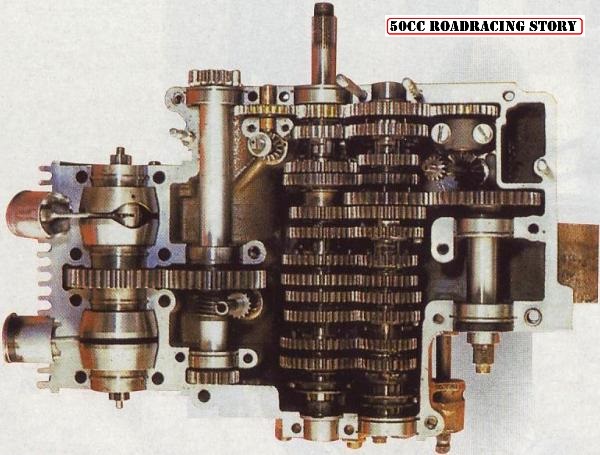- Login or Register
No account yet? Sign up
Exactly.Bandit1216 wrote: ↑14 Jan 2022, 10:15Yes.
There are practical issues. Let's say you have a 3 liter V8 and you strive 25 krpm. At one point the bore - stroke ratio gets ridiculous. At one point you would get a smaller stroke then the size of your main bearings and a relative heavy piston /conrod. More cylinders would give you the opportunity to apply the shortest stoke practical, yet smaller bore, and thus lighter pistons.
yesBandit1216 wrote: ↑14 Jan 2022, 10:15.... you strive 25 krpm. At one point the bore - stroke ratio gets ridiculous. At one point you would get a smaller stroke then the size of your main bearings and a relative heavy piston /conrod. More cylinders would give you the opportunity to apply the shortest stoke practical, yet smaller bore, and thus lighter pistons.

Intellectual property that costs millions to develop if quite often kept secret...echedey wrote: ↑14 Jan 2022, 21:46The truth is that I am going to take the cosworth ca engine for reference but as far as I know there is not much reference and data on that engine, as I would like to know certain data such as:
Compression ratio.
Diameter of the exhaust and intake valve heads.
and valve angle.
Piston diameter, piston size and piston length.
Connecting rod size.
Diameter of the crankpin and connecting rod.
Crankshaft radius.
Crankshaft counterweight grams.
The recent 'auto ignit' combustion developments by formula 1 engine manufacturers is all about the combustion being superfast, as such a like system will be beneficial to high reveing engines with their big bore and shorter time for combustion, But. It will be very near impossible development on past high reving F1 V10'S and V8'S, for the simple reason that those engines would never be able to obtain the necessaey high compression ratio needed, one of the requisits to impliment the 'auto-ignit/super fast' combustion recently developed in F1.Hoffman900 wrote: ↑13 Jan 2022, 18:29I’d like to see it on a naturally aspirated application as well, assuming it can work that fast.Zynerji wrote: ↑13 Jan 2022, 18:05I'd like to see that Honda auto ignite system on their old V8...Hoffman900 wrote: ↑13 Jan 2022, 17:34
+1
They can't open and close fast enough. Camshafts are REALLLY hard to beat.
5 valve chambers are a mess combustion wise and they struggle with getting good port velocity out of them.
This and they were at the limit of combustion speed with that bore size, and it wasn't the fastest engine of that era.
Fast ignition doesn't mean the hardware can cycle at the speed needed for 20k rpm operation. Compression ratio would be an issue as well.saviour stivala wrote: ↑15 Jan 2022, 06:13The recent 'auto ignit' combustion developments by formula 1 engine manufacturers is all about the combustion being superfast, as such a like system will be beneficial to high reveing engines with their big bore and shorter time for combustion, But. It will be very near impossible development on past high reving F1 V10'S and V8'S, for the simple reason that those engines would never be able to obtain the necessaey high compression ratio needed, one of the requisits to impliment the 'auto-ignit/super fast' combustion recently developed in F1.Hoffman900 wrote: ↑13 Jan 2022, 18:29I’d like to see it on a naturally aspirated application as well, assuming it can work that fast.
They were running at basically no clearance already. I think the Toyota V8 have been specifically using smaller diameter to increase their achievable compression.
I get that. But isn't the v6 pistons the same size as the v8? It seems like they could adapt the v6 parts onto a v8 block without crazy amounts of rework.
Already tight as can be in the squish areas.
NASCAR engines can’t have the aggressive cam profiles from DOHC engines, especially on closing. This limits the space available and/or the time the valve is fully open.Hoffman900 wrote: ↑15 Jan 2022, 17:33Already tight as can be in the squish areas.
NASCAR runs them tight enough that the piston jusssttt starts to kiss the head with carbon build up. Obviously you need to take rod stretch into account.
Raising the dome hurts combustion efficiency. Everyone is all about high static compression, but there is a trade off and more isn’t always better. Domes / raised crowns always hurt that, just a matter how much juice is worth the squeeze. Valve reliefs as well.